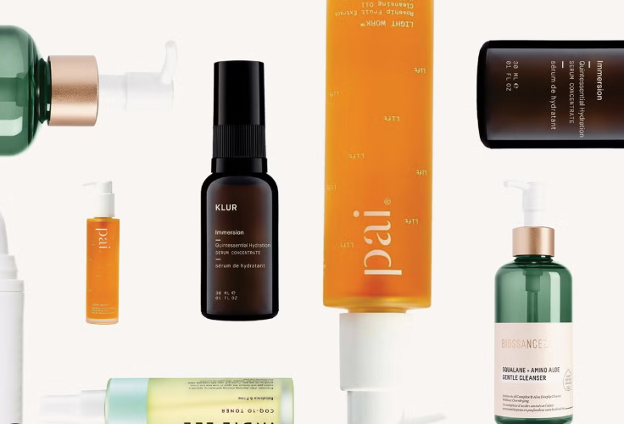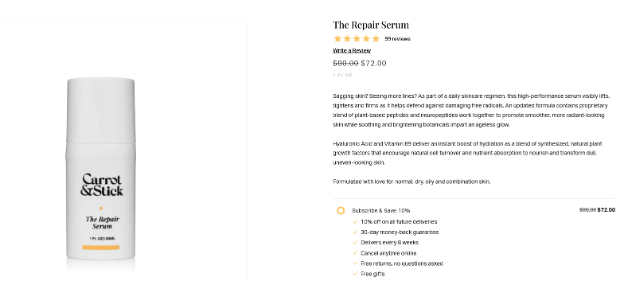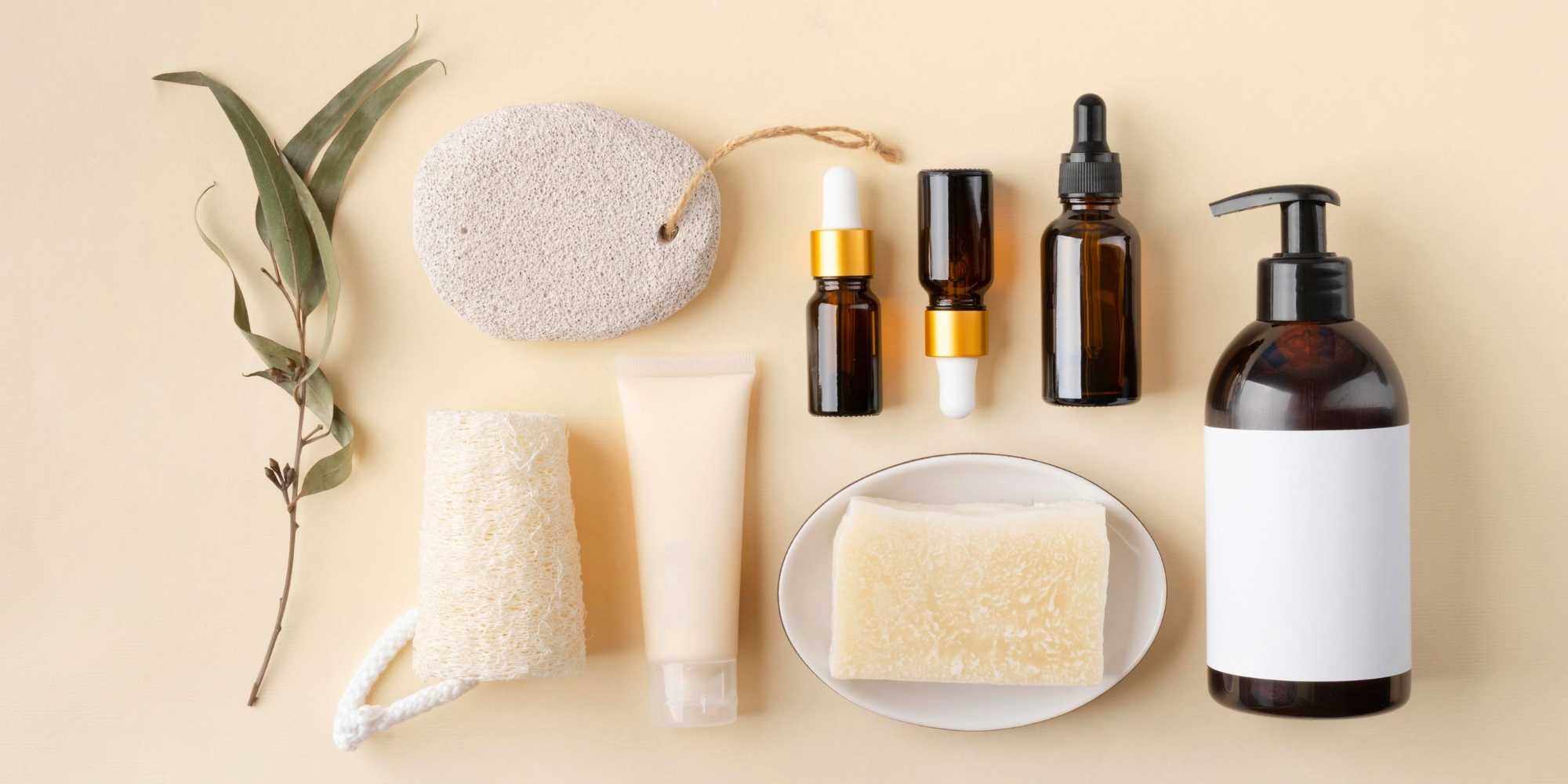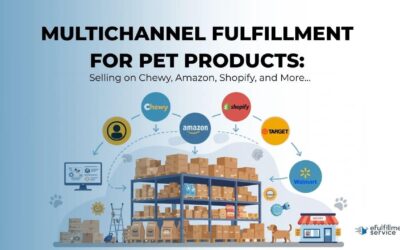
Jump right in: A Guide to Damage‑Proof Packaging for Fragile Skincare
- What Is Required on a Skincare Product Label?
- Understanding INCI Names in Skincare
- Net Quantity and Net Contents on Skincare Labels
- Required Warnings and Cautions on Skincare Products
- Skincare Marketing Claims: Rules and Risks
- Labeling Compliance Laws: U.S. and International Guidelines
- Real Brand Labeling Mistakes (and What You Can Learn)
- Common Labeling Mistakes to Avoid
- Why Skincare Labeling Matters to Consumers
- Tips for Skincare Brands to Stay Compliant
- Final Thoughts: Get Skincare Labeling Right
- Summary
Skincare represents the fastest-growing segment within the global cosmetics, health, and beauty industry. The market has become increasingly competitive, with countless brands from around the world striving to capture consumer attention and establish a distinct presence.
When you pick up a skincare product, the information printed on its label serves a purpose far beyond marketing appeal. Each component of the label, from ingredient lists and usage instructions to claims and certifications, governed by specific legal and regulatory requirements. These details designed not only to inform and protect consumers but also to ensure transparency and accountability within the industry.
For skincare brands, however, product labeling can be both an opportunity and a potential pitfall. Compliance with labeling standards is critical; inaccuracies or omissions can result in legal consequences, loss of consumer trust, or even product recalls. Understanding what role each part of the label communicates and why it matters is essential for both brands and consumers navigating today’s crowded skincare marketplace.
In this article, we will go over the key elements that must include on the label for compliance purposes so that you can fulfill your skincare products successfully.
What Is Required on a Skincare Product Label?
First thing you need to know is what makes up the key elements and how they apply to the label.

Key Labeling Elements
- INCI (Ingredient Names)
- Net Quantity Statement
- Warnings and Cautions
- Claims and Marketing Language
Let us go through each step.
Understanding INCI Names in Skincare
What Does INCI Stand For?
INCI is the standardized way to name cosmetic ingredients. Each ingredient is listed by its INCI name on the label. Each INCI name consists of the Latin genus and species of the plant, sometimes followed by the part used, leaf, seed, root, and the type of preparation (extract, oil, powder). The idea is consistency so that consumers, regulators, and industry have a common vocabulary. Take Aloe Vera for instance, on the label this will appear as Aloe Barbadensis Leaf Juice.
The ingredients listed in descending order of predominance by weight, so whatever the main component is (water, oils) goes first. Once an ingredient is under 1% concentration, providers often have more flexibility in order.
Why INCI Ingredient Names Matter
Having standardized compliance helps people who have allergies or sensitive skin to check ingredients. It also facilitates regulatory compliance across markets (EU, US) that require INCI labeling. Transparency, even if you do not know what “Cete aryl Alcohol” is, you at least can look it up.
Common INCI Labeling Challenges for Brands
Complexity vs consumer comprehension. INCI names can sound like chemical gobbledygook, which consumers dislike. Brands sometimes try to balance “pretty” names vs required technical names.
Ingredient blends / tradenames. Sometimes a brand uses a proprietary blend or a trade name (a complex from a supplier) they may want to list just the trade name, but regulations often require all constituent INCI names of the blend.
Updating INCI lists. New ingredients or naming changes mean brands must stay up to date. If an ingredient reclassified, mis-named, or re-named, old labels may become non-compliant.
“Below 1%” ordering. As noted above, once the ingredients are under 1%, it does not matter what order the ingredients are on the label. That gives room for manipulation (marketing-wise) putting “good sounding” minor ingredients earlier, “preservatives” later. Consumers and watchdogs sometimes call this out.
Save Time and Let us Handle Your Skincare Fulfillment!
See How Using a 3PL for Your Subscription Box fulfillement needs could simplify your business. Get a Free Quote from eFulfillment Service Today!
Net Quantity and Net Contents on Skincare Labels

What Is Net Quantity?
What does Net Quantity / Net Contents stand for? This pertains to the number of units of product is in the container. For liquids, usually in volume (milliliters, fluid ounces); for creams/solids/semi-solids, weight (grams/ounces). This information must appear on the principal display panel (PDP), that is, the front or the part consumers will see first. It also must be conspicuous and conform with size and font requirements, so it is readable.
Why Accurate Net Content Is Important
Allow consumers to compare value between products, price per ml. Prevents misleading packaging, big bulky packaging that hides little product details. A part of regulatory labeling requirements; missing or inaccurate net quantity is often a basis for regulatory warnings or misbranding notices.
Labeling Pitfalls with Net Quantity Requirements
Dual units of measure. Markets require metric and US customary units. Ensuring both are accurate and legal.
Font size & visibility. On small containers/pumps/mini-versions, it is hard to fit everything and still meet type-size minimums. Brands get warnings or pulled back for this.
Consistency across packaging. Inner containers and outer cartons may require net content. If you sell via different package formats, you need to ensure all packaging complies.
Variations (moisture loss), there are permissible variations allowed, but brands need good manufacturing practices to ensure what is outlined on the label is reasonably accurate.
Required Warnings and Cautions on Skincare Products
What they are: This refers to statements that alert the end user to hazards, necessary cautions, or when medical advice needed. We have all read these and then sometimes wonder if we should be using the product or taking the medication. These are cautions to alert the end user that this could happen, for example: “For external use only,” “Avoid contact with eyes” or “Discontinue use if irritation occurs.”

When Warnings Are Legally Required
When the product could be hazardous, like with acids, retinoids, strong exfoliants. If required by regulation for certain categories (aerosols, sprays). If the product has a certain level of active/treatment ingredients (which might need patch-testing or medical advice).
Regulatory Standards for Labeling Warnings
Warnings must be prominent and conspicuous type size, placement, contrast matter. The label must include manufacturer/distributor name and address, so consumers know who is responsible.
Common Mistakes in Warning Label Placement
Balancing marketing vs safety. Brands want to say, “use daily,” “super-mild,” but must also include warnings when needed. Skipping them can lead to regulatory action.
Varied market regulations. What counts as a necessary warning in the EU might differ in the US, or Australia. Global brands must adapt labeling for each region.
Clutter vs readability. Too many warnings, tiny print, or back packaging where consumers might not notice can lead to non-compliance.
Skincare Marketing Claims: Rules and Risks

What Counts as a Product Claim?
You may be wondering what exactly are “claims” statements? These statements should focus on a specific benefit supported by evidence, using honest and realistic language to build consumer trust. They will outline what the product does: the benefits, results, effects. Examples: “reduces wrinkles,” “clinically tested,” “organic,” “cruelty-free,” “hypoallergenic,” “lightens skin,” “SPF 30 protection”. Let us say you are purchasing an anti-aging cream that contains hydraulic acid, the statement on the packaging might read as:
Primary claim: Instantly boosts skin hydration by an average of 40% and maintains continuous hydration for up to 72 hours. This statement avoids vague marketing language by presenting clear, specific results and referencing how they obtained those results.
Legal Boundaries for Skincare Claims
The claims must be truthful and not misleading. Brands must have substantiation (data/science) for objective claims.
If a product claims to treat or prevent disease or affect structure or function of the body (e.g. “treats acne”, “eliminates eczema”, “repairs skin barrier”, etc.), it may be regulated as a drug or an OTC medicinal product rather than a mere cosmetic. Then different regulatory requirements apply.
The following statements, “Natural,” “organic,” “free from” but governed: you must be able to substantiate what “natural” means, and authorities are tightening rules around “free from” claims.
Risky and Misleading Claim Examples
Unapproved drug claims. Brands sometimes cross the line (intentionally or accidentally) by saying something like “cures acne” when that implies a drug claim. FDA issues warning letters.
Ambiguous terms. “Hypoallergenic,” “dermatologist-tested,” “fresh.” These sound good but are vague; if someone complains, evidence must exist to show what that means, where the study/testing originated.
“Organic” marketing. Unless a product meets certain standards or has certification, using “organic” or implying it to drive premiums can lead to lawsuits.
Country-of-origin claims outline “Made in USA” or “Made in EU” when only a portion of the steps are domestic can draw scrutiny. There are rules about “unqualified” origin claims.
Want Someone Else to Handle the Bundling and Shipping?
Get a Free Quote from eFulfillment Service and see how we can simplify your beauty subscription!
Labeling Compliance Laws: U.S. and International Guidelines

While labeling laws vary by country/region, here is an outline of the difference between using U.S. rules (FDA, FTC) and general international norms:
U.S. Skincare Labeling Rules (FDA & FTC)
The Federal Food, Drug, and Cosmetic Act (FD&C Act) and the Fair Packaging and Labeling Act (FPLA) govern cosmetic labeling.
Labeling must include identity statement, net quantity, ingredients (INCI), company, and address of manufacturer/ distributor.
Products that claim to treat or prevent disease is considered drug claims and require more stringent regulatory compliance.
European Union Skincare Labeling Rules
There is the EU Cosmetics Regulation (Regulation (EC) No 1223/2009), which requires INCI names, content declaration, labeling of warnings.
Certain claims (especially “free from”) are under increasingly strict rules.
Global Trends in Labeling Enforcement
Across markets: the principle of “truth in labeling” is common, meaning mislabeling or misbranding is a frequent violation.
Real Brand Labeling Mistakes (and What You Can Learn)
Let us look at known brands and the kinds of labeling or claims issues they have faced, to illustrate how these rules play out.

Top Labeling Issues Faced by Known Brands
Brand: Neutrogena (Johnson & Johnson) Typical Hurdles / Issues: In 2021, The brands Neutrogena & Aveeno aerosol sunscreen were recalled due to benzene contamination. While that is more a safety issue than labeling per se, there have also been lawsuits around misleading claims (PFAs in products advertised as “natural,” or failure to disclose certain ingredients).
Brand: Clinique Typical Hurdles / Issues: Lawsuits over “oil free” and “live probiotic” claims when consumer plaintiffs alleged that the product did not meet what consumers expected.
Brand: Bare Minerals / Shiseido Typical Hurdles / Issues: Issues with “free of chemicals / toxic substances” type marketing when studies found PFAS (“forever chemicals”) in part of their makeup lines. The tension between marketing “clean/natural” and actual content has been under scrutiny.
Brand: Paula’s Choice Typical Hurdles / Issues: A lawsuit alleging that the “Made in USA” claim was misleading because part of the ingredients (like plant extracts) sourced from abroad. Also, complaints that “natural” or “organic” claims did not align with ingredient sourcing.
Brand: Dr. Squatch Typical Hurdles / Issues: A class action suit claiming their product lines misbranded as “natural,” “paraben-free,” when ingredients in their formulations are synthetic or do not match what consumers expect “natural” to mean.
Summary of Regulatory Actions and Consumer Complaints
From the regulatory side and real cases, of the recurring problems are:
Overclaiming: Claiming effects beyond what studies support or making drug-like claims without going through the drug regulatory pathway.
Origin / “Made in” misrepresentation: Using “Made in USA” or similar when all steps (or packaging) done domestically.
“Organic / Natural / Free From” ambiguity: What does “natural” mean? What does “free from” exclude? These need definitions, substantiation, or certification.
Misorder of ingredients / omission of minor ones: Sometimes brands misplace preservatives (which could be under 1%), or use “proprietary blend” to avoid full disclosure. Regulators may check full label and actual composition.
Label formatting & legibility: Tiny font, lack of contrast, placement of required information in obscure places. When consumers cannot locate “net contents” or “warnings,” that is an issue.
Cross-market differences: A label complaint in one region may violate rules elsewhere. Brands with international markets need to adapt.
Rethink Your Beauty Brands Strategy!
See How Using a 3PL to start a subscription box could skyrocket your business. Get a Free Quote from eFulfillment Service Today!
Common Labeling Mistakes to Avoid

Overstated or Misleading Claims
Overclaiming: Claiming effects beyond what studies support or making drug-like claims without going through the drug regulatory pathway.
Misordered or Incomplete Ingredient Lists
Misorder of ingredients / omission of minor ones: Sometimes brands misplace preservatives (which could be under 1%), or use “proprietary blend” to avoid full disclosure. Regulators may check full label and actual composition.
Font Size, Placement, and Legibility Issues
Label formatting & legibility: Tiny font, lack of contrast, placement of required information in obscure places. When consumers cannot locate “net contents” or “warnings,” that is an issue.
Cross-Border Labeling Inconsistencies
Cross-market differences: A label complaint in one region may violate rules elsewhere. Brands with international markets need to adapt.
Why Skincare Labeling Matters to Consumers

Ingredient Transparency for Sensitive Skin
Being aware of INCI helps consumers avoid ingredients they are allergic to or prefer to avoid.
Understanding Product Size and Packaging Value
Checking net quantity helps detect “shrinkflation” or misleading packaging.
How to Spot Misleading Claims or Marketing Tricks
Warnings protect against misuse (applying strong actives too often).
Claims shape expectations, making sure they are realistic and grounded in proof helps avoid disappointment, and in rare cases, health risk.
Want to Skyrocket Your Skincare eCommerce Business?
Using a 3PL can free up your time so you can focus on what matters, selling great products!
Tips for Skincare Brands to Stay Compliant
Follow INCI Naming Rules Closely
Always use INCI naming strictly; when using blends, disclose constituents.
Back Claims with Verified Data
Have accurate, validated data to support any objective or functional claims, like clinical study.
Check All Label Panels, Fonts, and Formats
Double-check all label panels: PDP, information panels, both inner and outer containers.
Audit font sizes, contrast, visibility. Use regulatory checklists per market.
Keep Documentation for “Made In” or “Natural” Claims
For “Made in” or “Natural / Organic / Free From” claims, keep documentation (procurement origins, composition) and ensure consistency.
Stay Updated on Regulation Changes
Continuously monitor regulations, laws change (definitions of “organic,” rules around “free from”).
Rethink Your Skincare Strategy!
See How Using a 3PL for Your beauty fulfillment needs could simplify your business. Get a Free Quote from eFulfillment Service Today!
Summary
The topic of skincare labeling may not seem exciting, but it is one of the most essential aspects of building and maintaining a trustworthy skincare brand. Proper labeling is not just about aesthetics, it is a matter of legal compliance, consumer safety, and brand integrity. Every element on a label, from the INCI (International Nomenclature of Cosmetic Ingredients) list and net quantity statement to warnings and marketing claims, carries specific regulatory significance.
Overlooking these details or misrepresented, the consequences can be serious. Missteps in labeling are more common than companies realize, even among established, well-recognized brands. Companies have faced lawsuits, FDA warning letters, and costly product recalls over misleading claims with terms like “natural,” “clean,” or “Made in USA” that did not align with the product’s actual formulation, sourcing, or manufacturing process. Beyond financial penalties, these incidents can lead to a loss of consumer confidence that takes years to rebuild.
Ultimately, accurate labeling is not just a regulatory requirement, it reflects a brand’s transparency and respect for its customers. Brands that invest in getting it right demonstrate credibility, accountability, and a genuine commitment to consumer trust.




0 Comments